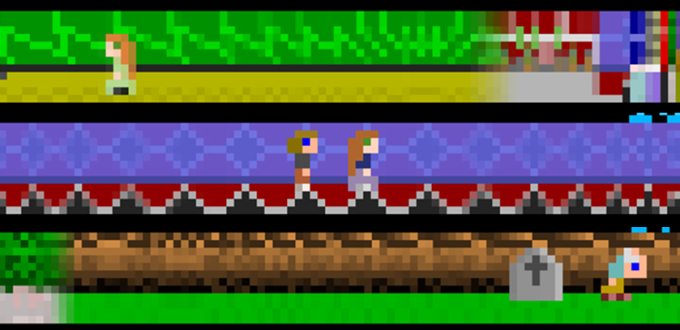Integrating games into the art world: A case study of Jason Rohrer’s games
The question “are video games art?” has caused a lot of discussion and debate over the last decade. Many academic articles have been written on the subject. These articles have used varying approaches to justify the legitimacy of the medium, from critical readings of particular video games to reasoning that since games have all the formal elements expected from art it’s forgone conclusion that they therefore must be art. What unifies these different theses is the fact that none of them approach the issue from the viewpoint of the established art world.
Theresa Claire Devine’s article Integrating Games Into the Artworld: A Methodology and Case Study Exploring the Work of Jason Rohrer tries to remedy the fact by using the methodology of the art world to examine the works of game auteur Jason Rohrer. In order to do, she employs different Aesthetic Theories of art philosophers, especially that of Arthur Danto, who argued that “art is not an open concept”. Intentionality, the artist’s identification of what a work “is”, is another larger component of Danto’s theory. In other words, an artist must identify “what a thing is to determine the soundness of the representation of a premise in the work”.
The author chose to examine the works of the game designer Jason Rohrer as a case study. The choice wasn’t arbitrary. Rohrer has chosen to self-identify as an artist despite lacking training from the field. He hails from a computer science and game design background and thus his work has never undergone the rigor of art critique.
Rohrer’s work centers around hypothetical situations. In his game Passage (2007) the player is forced to make a choice between getting married or staying single and searching for treasure. In Idealism (2008) the player is asked “what happens when your ideals stand in the way of your goals?”. In Immortality (2008) he asks the player: “if you could choose immortality, would you?”. Each game has a built-in conundrum.
To see whether the games would pass the test of being deemed art, the author examined them through phases.
The games he produced employ simplistic visuals and gameplay that harken back to the simpler 8-bit days of gaming. The games try to entice the player to replay them and consider different outcomes for different playstyles. For instance if the player chooses to play Passage alone, the avatar can collect more treasure, as exploring the game world with a partner means being unable to fit to spaces that are too small for two characters. In Idealism, the player must progress to the finish line, but after a while enemies start appearing which must be shot in order for the player to reach the goal. Immortality is based on the premise that an immortal life would be boring. In it, the player is given two choices: immortality or death. The avatar moves blocks and stacks them to create a tower to achieve one or the other choice. If the player chooses immortality, then the game proceeds, and the player can stack and move blocks infinitely. When the player becomes bored, he/she can go back and choose death to end the game.
Passage and Immortality passed the first phase, while Idealism didn’t due to the fact that it failed to live up to the game’s message due lack of player agency (the player is forced to shoot enemies to progress). After that, the question arose: do these games embody the meaning of the artist? Immortality didn’t pass the test, as it depicts an infinite life as an endless boring drudgery, with a lack of wonder, so it fails to investigate the possibilities that Rohrer aspired to explore in it. Passage managed to pass the test however as the game’s dynamic between collecting more treasure for (an ultimately meaningless) score or getting married struck a better balance between the options. The author concludes that the game thus fulfilled all of Danto’s necessary conditions for a piece to be considered a work of art.
Passage did not succeed in passing through a second examination, which was done using the methodology of art philosopher Howard Becker. The questions Becker asks include “is the the work accessible to an audience with little or no training in art? and ‘‘Is the work aware of the history of similar works?’’
While Passage is accessible to people outside of the art community due to its nature as a video game, it failed to take into consideration prior work done by similar art pieces. Thus the game ultimately fails to match the standards set by art curators, historians and critics. Perhaps for that reason the game is housed in the Architecture and Design department at the Museum of Modern Art in New York City, where it is classified as Applied Design rather than art.
Original article: http://journals.sagepub.com/doi/full/10.1177/1555412015596105
More from Game Research Highlights
How do you want to do this? – A look into the therapeutic uses of role-playing games
Can playing RPGs contribute positively to your wellbeing? A recent study aims to find out how RPGs are being used …
Eldritch horrors and tentacles – Defining what “Lovecraftian” is in games
H.P. Lovecrafts legacy lives today in the shared world of Cthulhu Mythos and its iconic monsters. Prema Arasu defines the …
Are Souls Games the Contemporary Myths?
Dom Ford’s Approaching FromSoftware’s Souls Games as Myth reveals the Souls series as a modern mythology where gods fall, desires …














